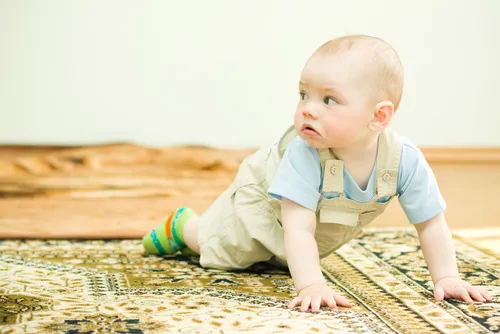Children who suffer from asthma may experience attacks on a regular basis. As a parent, it’s difficult to see your child suffer from such debilitating breathing issues. As most of you already know, there are prescriptions offered by doctors that can significantly help children with asthma. In addition to oral pills and inhalers, there are several things you can do at home to help manage this condition and make breathing easier for your child.
Here are 10 Ways to Help Manage Asthma in Children:
1. Wash Pillows/Sheets Frequently
Many parents don’t realize just how much dust is hiding in your child’s pillow and sheets. When your child lies down to sleep at night, their head is surrounded by pillow cases and sheets. If they’re not cleaned frequently (at least a few times a week), your child will be breathing in dust as they sleep. As most parents know, dust is a trigger for asthma symptoms. So keep your cleaning schedule regular.
2. Remove Carpets/Rugs
If the floors in your home are covered with carpet or rugs, you may want to seriously consider switching these to hardwood. Sure, the cost is significant but the benefits on your child’s breathing will surely outweigh the price of swapping. If you can’t afford hardwood, there are several types of affordable laminate floors as well. If you can’t afford either, have your children play in an area that has a hard surface (especially if they’re crawling around).
3. Keep Pets Brushed and Cleaned
Pets are a huge reason why so many children experience asthma symptoms. If you must have pets, make sure you brush them several times a day. If you don’t, the hair from their bodies will be dispersed into the air with every step they take. This will make your child’s asthma symptoms much more noticeable. Brushing and bathing your pets while your children are at school (or not in the room) will have a significant impact on managing your child’s asthma symptoms.
4. Wash Stuffed Animals Regularly
Most parents remember to wash their kids’ clothing on a regular basis but do you always remember to wash their stuffed animals as well? Stuffed animals hide tons of dust and dirt. Your children then hug, cuddle and sleep with them for hours, releasing all of the dust and allergens right into their faces. Washing stuffed animals at least once a week will help keep asthma symptoms at bay.
5. Get Your Child Their Flu Shot
Getting your child their flu shot each year will not only help prevent them from catching the flu but it will also significantly reduce the likeliness of their asthma getting out of control. It’s a known fact that asthma symptoms worsen with the flu, so taking the appropriate steps to avoid the flu will also help avoid unwanted asthma attacks as well.
6. Vacuum Daily
If you have carpets (or even if you have wood floors) vacuuming daily is critical in managing asthma symptoms. This particular chore becomes even more important for those of you with pets. Children spend a lot of time crawling on their hands and feet – a dirty, dusty floor will have them inhaling allergens in no time. Vacuum your carpets and wash your wood floors to help manage these symptoms.
7. Keep Bathrooms Clean and Dry
One of the most common asthma triggers is mold. Making sure rooms with moisture (like bathrooms) remain dry and clean will help prevent mold from forming. If you can prevent mold from forming, you can drastically reduce the chance of your child’s asthma symptoms becoming prevalent. Using a towel to clean up excess water from showering and making sure surfaces are dry and clean will help ensure your child stays breathing easily.
8. Use Unscented Home Products
Fragrances and strong scents are another trigger for this common condition. Using unscented home products will do wonders for your child’s breathing. There are several types of unscented home products available. Consider swapping your scented floor cleaners, all-purpose cleaners and detergents for non-scented alternatives.
9. Increase Their Vitamin D Intake
Vitamin D deficiencies have been linked to the onset of asthma symptoms in children. Many studies suggest that a higher dose of vitamin D can help keep asthma symptoms at bay. In addition to oral supplements, Vitamin D can be found in many foods including milk, fish and eggs. Another great source of Vitamin D is the sun, so get your children outside during the day. If you think your child has a Vitamin D deficiency, consult with your doctor.
10. Watch the Weather
Keeping an eye on the weather can actually have a big impact on controlling your child’s asthma symptoms. Rainy, damp weather has been known to trigger these symptoms, as has wind. If the weather forecast is calling for lots of wind and rain, plan indoor activities for your child and keep them out of this weather as much as possible.
Looking for other articles focused on children’s health? Check these out:












